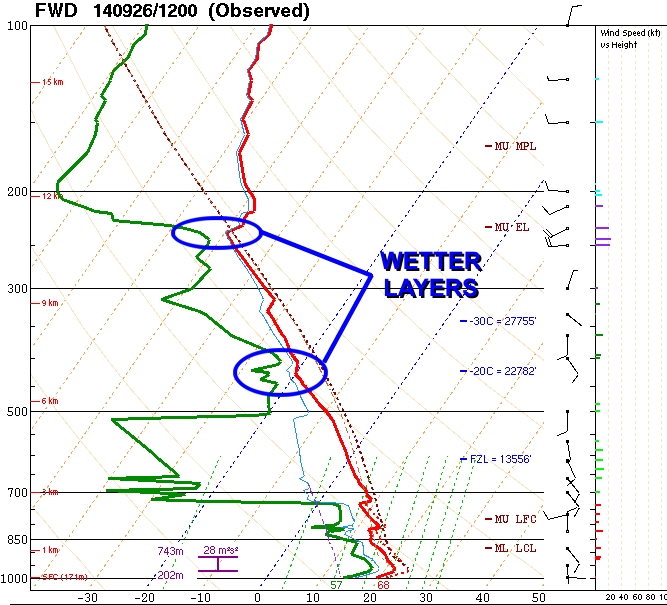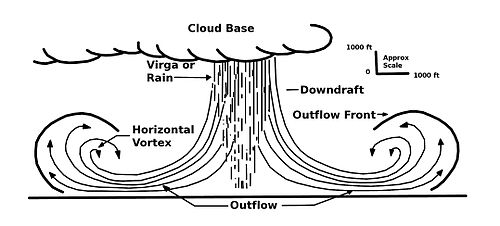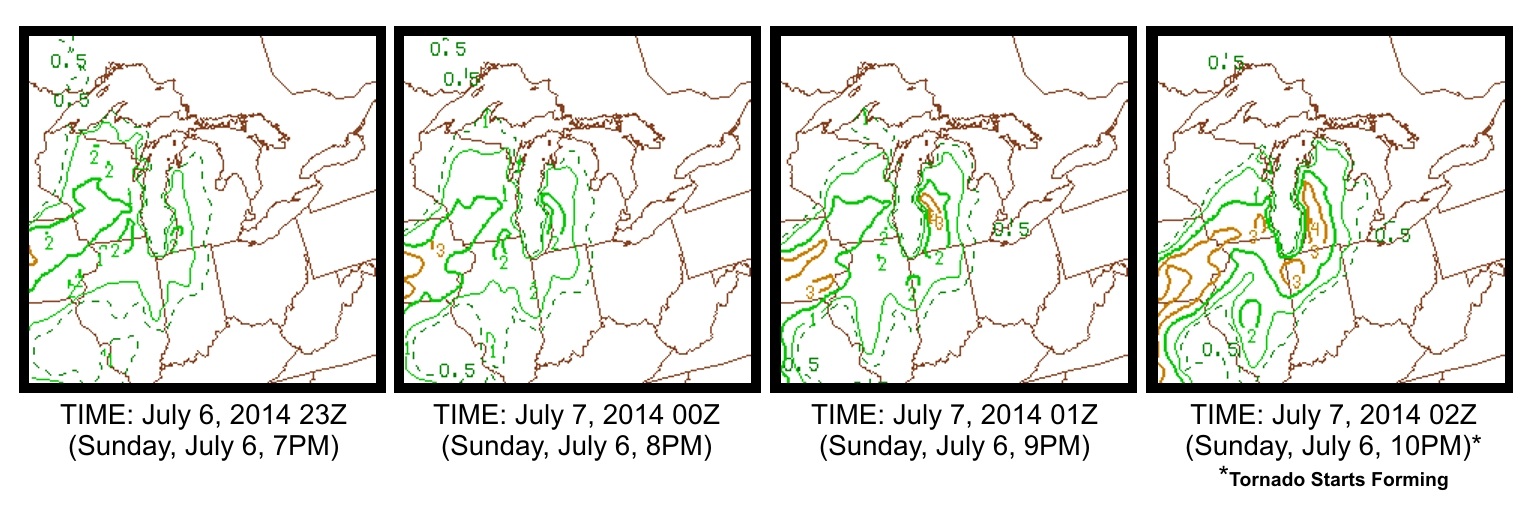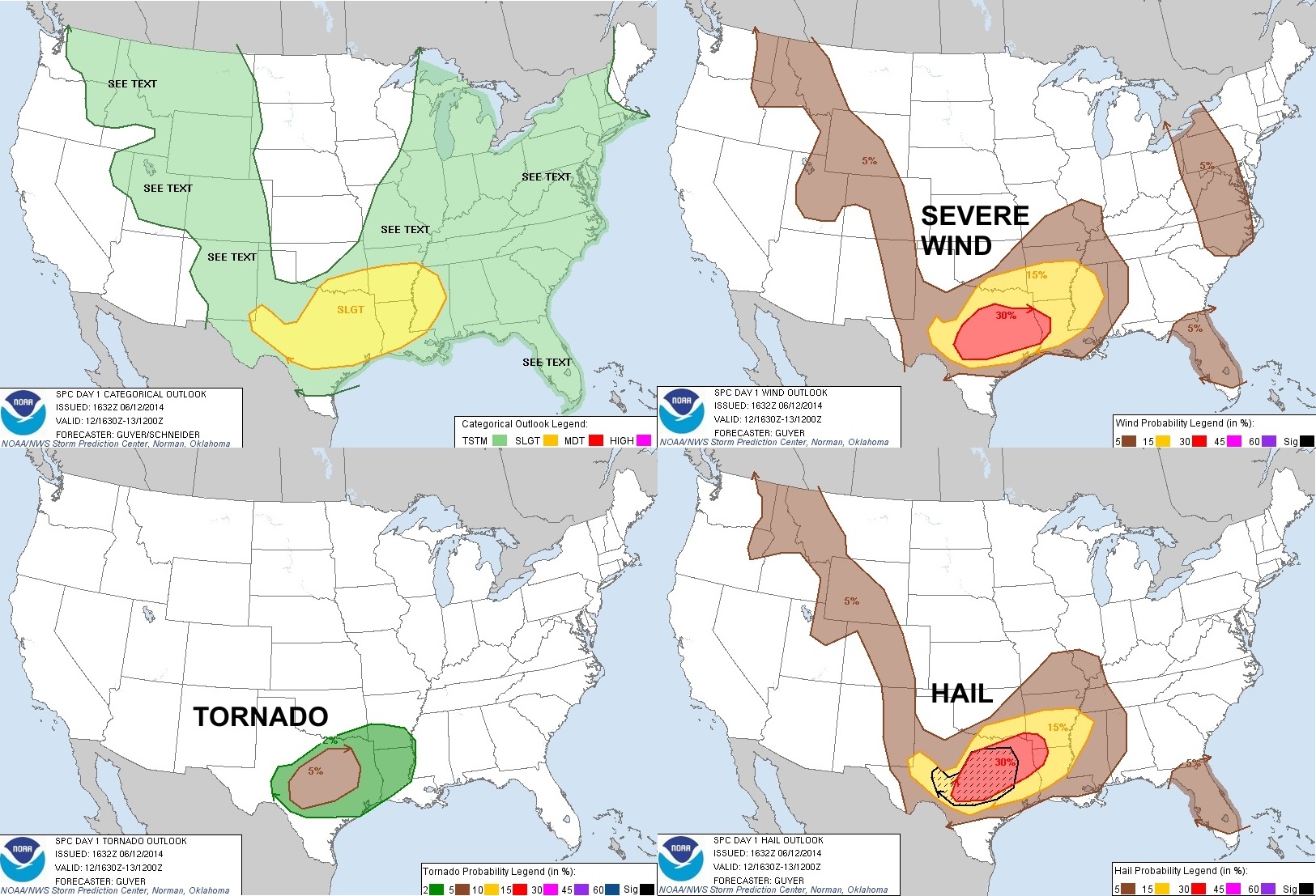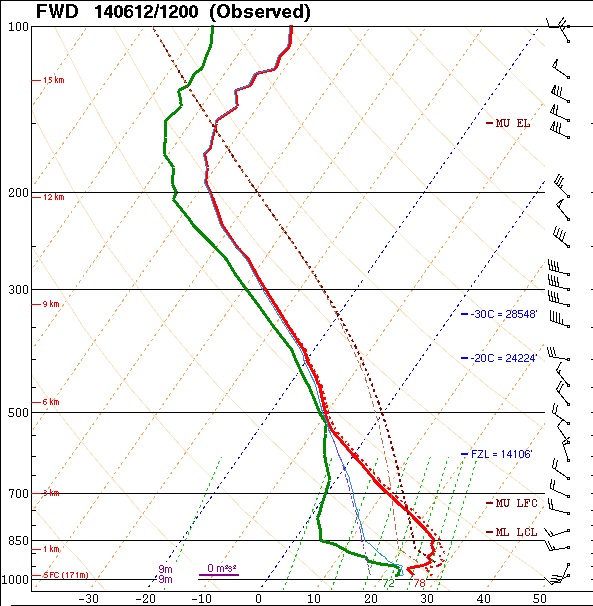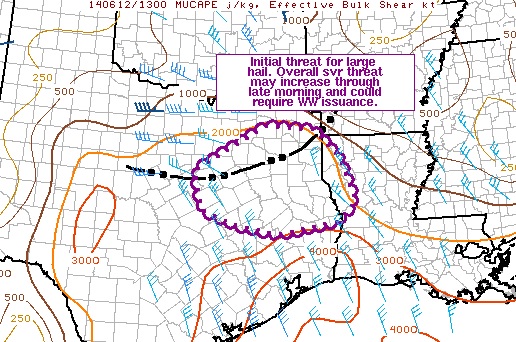Today marks the 1-week anniversary of a surprise EF-1 tornado that hit lower West Michigan. It was a surprise in the sense that apart from an initial severe thunderstorm warning as the system moved over Lake Michigan, no subsequent warnings were issued for the tornado or its parent storm. I've been pouring over the available data and have come to the conclusion that the tornado shouldn't have been a surprise given the atmospheric conditions of the time.
Let me continue by saying that I'm not a meteorologist and I don't claim to be one. I am, however, a weather enthusiast who has been studying meteorology for the past number of years. Hindsight is always 20/20 when it comes to this kind of thing, so what may be perfectly clear now, may not have been as events were unfolding. Be that as it may, a confirmed EF-1 tornado hit on Sunday night (July 6, 2014) near my hometown of Grand Rapids, MI (well, technically Jenison, MI is my boyhood home town, but it's much easier to say "Grand Rapids). With all of the advances made over the years in weather forecasting, radar, and public awareness, it seems quite unlikely that something like this could have even happened. Again, I'm NOT writing to point the finger at anyone. I really admire the NWS for what they do and look to them as the professionals that they are. So with that said, what happened?
For lower Michigan, Sunday, July 6 was forecast to be in the "general risk" category - having a 5% chance of damaging winds and hail.
By 12:30 PM EDT, the SPC expanded the SLIGHT RISK category eastward. All of lower Michigan was now forecast to have a 15% chance of damaging winds and hail.
The actual text of the outlook reads (emphasis added):
THE SLIGHT RISK AREA HAS BEEN EXPANDED NWD/EWD
ACROSS NRN WI INTO UPPER MI AND EWD INTO PARTS OF LOWER MI
CONSISTENT WITH MESOSCALE AND MOST CONVECTION-ALLOWING MODEL
GUIDANCE. LARGE HAIL AND DAMAGING WING GUSTS ARE EXPECTED TO BE THE
PRIMARY SEVERE HAZARDS
BUT AN ISOLATED TORNADO OR TWO MAY ALSO
OCCUR.
In other words, based on the forecast weather models and current observations, they raised the possibly of severe weather for the entire region.
For the rest of the afternoon, late evening, the weather was non-eventful. However, around 8:00 PM EDT, storms began forming over Lake Michigan, were intensifying, and racing eastward. Here is a radar snapshot at 7:58 PM EDT showing moderate to heavy storms north-northwest of Grand Rapids in Oceana, Montcalm and Muskegon Counties.
As the storms west of Ottawa county came ashore, they intensified to the point that a severe thunderstorm warning was issued.
Here is a radar snapshot from 9:04 PM showing 3" hail!
As a result of the potential damaging hail and damaging winds, the NWS issued the first severe thunderstorm warning 5 minutes later -
Although this warning originally was set to expire at 10 PM EDT, it was cancelled early - around 9:46 PM - due to the storm falling under severe limits.
Now here is where things begin to get interesting. 15 minutes later - at 10:01 PM EDT, here is what an un-smoothed radar snapshot looked like:
The granular nature of this Level III data easily obscures what I think is the smoking gun. When the same frame of radar is smoothed. This is what you get:
In my mind, I'm seeing at a very familiar shape - that of a supercell. However, unlike those supercells that form in the southern plains of the US, this one is smaller - hence a mini-supercell. (More info on mini-supercells
here) Here's an annotated view:
Let's compare the above image to an actual supercell which contained a tornado. Here is a snapshot from the Oklahoma City Radar on May 3, 1999. The similarities are quite striking.
A close-up of the reflectivity and radial velocity data clearly shows that rotation was beginning to form at 10:01 PM, about 2-3 miles west of the city of Jamestown in Ottawa County. Red colors show outbound winds (as seen from radar) and green colors indicate inbound winds (as seen from radar). The red/green juxtaposition clearly indicates cyclonic (counter-clockwise) rotation.
2 scans of the radar - about 8 minutes later (10:09 PM EDT) - a MESOCYCLONE icon shows up. This is an algorithm built-into the radar that confirms areas of rotation within a storm. While it's true that these symbols can often be misleading, I contend that this is confirmation that a tornado has already begun to form. At this time, the area of interest is directly over the Ottawa/Kent county border.
Another 2 scans of the radar go by - about 9 minutes (10:18 PM EDT) and another MESOCYCLONE icon shows up. This time it indicates that the rotation is not as deep. The placement seems a bit off too. This could be a function of the imprecise algorithm. However, the center of rotation (as derived from velocity data) is consistent with the NWS's claim that the tornado formed about 10:20 PM EDT roughly 4 miles west of Cutlerville.
1 scan radar scan later (4 minutes - 10:22 PM EDT), the tornado is just west of US-131 and inbound winds are measured on radar at 78.7 KTS - which is around 90 MPH! This is 32 MPH
MORE than the severe thunderstorm wind threshold. (Severe thunderstorm winds need to be at least 58MPH for a warning to be called). Also visible in this radar scan is possible tornadic debris ball, indicated by the area of high reflectivity.
The tornado continues for another 8 minutes or so, continuing to do quite a bit of damage. During this time,
no warnings had been called. Luckily, no deaths occurred from this storm.
Here is the official tornado track. (Hat tip to the Grand Rapids NWS office for this image).
Why during this entire event were no warnings issued? Did this just happen to quick for anyone to react? Looking back at the data, I say no. Again, I'm writing this article after days of pouring over the data. I wasn't there as the minutes were ticking. However, I'm going to go one step further and try to prove that this was no fluke. I contend that the atmosphere in an around the lower West Michigan at the time of this storm - up to even an HOUR before the tornado was forming - was a loaded gun waiting to happen.
There are a number of key ingredients needed for the formation of a supercell and ultimately a tornado.:
moisture,
instability, and
wind shear. It's important to know that not all supercells form tornadoes. In fact, roughly 20% ever do. Let's take a look at each of these ingredient factors during the hours leading up to the tornado.
MOISTURE
I'll start with the surface analysis during the time period in question. This sequence shows that a warm front tracked through the area before the time that the tornado occurred. The warm front passed overhead around 8PM EDT, but from my estimations, the tornado didn't begin forming until 10PM EDT. This gave the atmosphere 2 hours to get primed.
As a result of the warm front, the dew point, or the measure of how much moisture is present in the air, dramatically increases. By 10PM EDT, dew points were up to 68 degrees F - which is plenty for the development of severe storms.
INSTABILITY
This next sequence shows MLCAPE (displayed as red contour lines) and MLCIN values (shades of blue) from 3 hours PRIOR to the tornado forming to the time (in my estimation) that the tornado actually formed.
CAPE stands for
Convective
Available
Potential
Energy and measures the amount of instability in the atmosphere in Joules (energy) per Kilogram of air. The "ML" stands for
Mean
Layer and is an average calculation based on the lowest levels of the atmosphere.
Instability is where a parcel of air is warmer than it's environment, thus is buoyant. Due to this buoyancy, the parcel of air wants to rise further into the atmosphere. This upward movement relates to updraft strength in thunderstorms. As is illustrated in the sequence above, the amount of CAPE steadily increases to values of 2000 J/kg. This is certainly enough instability energy to lead to the formation of supercells. Conversely, CIN (convective inhibition) is steadily DECREASING (goes from blue to white) throughout this same time frame. CIN can be thought of a force working against CAPE. Higher CIN values tend to
prevent parcels of air from rising. As CIN is gradually snuffed out air parcels have a better chance of rising.
WIND SHEAR
Wind shear is a measure (in Knots) of how much winds change direction with height. Winds at the surface will often be blowing at different directions the higher you move up into the atmosphere. Supercells become more probable as the effective bulk shear increases through the range of 25-40 kt and greater.
The above sequence shows a persistent shear of at least 30 kts during the time period leading up to and the time of the tornado - well sufficient for tornadoes.
Another measure of shear is called Storm Relative Helicity. SRH stands for
Storm
Relative
Helicity. Helicity by itself is the measure of the potential of a fluid (in this case air) to move in a helical (corkscrew) motion. This is caused by air moving at different speeds and directions in different parts of the atmosphere. These winds are measured relative the a storm and thus you have Storm Relative Helicity. By 10PM EDT, SRH values were around 300 M^2/S^2 - which, again, is more than sufficient for the formation of supercells.
Note that the highest values of 0-3 KM SRM (Storm Relative Helicity) are moving in conjunction with the tornado-forming regions of the storm.
PUTTING THE INGREDIENTS TOGETHER
Moving forward, we can use these ingredients to further refine the potential for tornadoes. CAPE and SRH can be combined together (in a crazy mathematical way that we won't go into here). From this value get a measurement called EHI or
Energy
Helicity
Index. This is one of the best measurements for predicting tornadoes. The following sequence uses the same time frame as the previous examples.
A steady increase in EHI is noted in the time leading up to 10PM. The value of "4" listed above can actually signify that tornados up to F2 and F3 are possible!
Lastly, using ALL of the measurement ingredients I've discussed so far - Bulk Shear, Storm Relative Helicity, MLCAPE, MLCIN and something called LCL Height (which is a measure of how low clouds are forming in the atmosphere), we can derive something called the
Significant
Tornado
Potential or
STP. According to the SPC, "A majority of significant tornadoes (F2 or greater damage) have been associated with STP values greater than 1, while most non-tornadic supercells have been associated with vales less than 1..."
Looking at STP values leading up to the tornado, we see a very small region directly over west Michigan with a value of 2! In fact, the last sequence shows that area directly over the area hit by the tornado.
I hope that I have been able to construct my arguments supporting the idea that a mini supercell formed in a primed atmosphere and ultimately led to the EF-1 tornado and that this was evident at least one hour prior to the event. The data is out there - so please feel free to draw your own conclusions.
-Andrew



